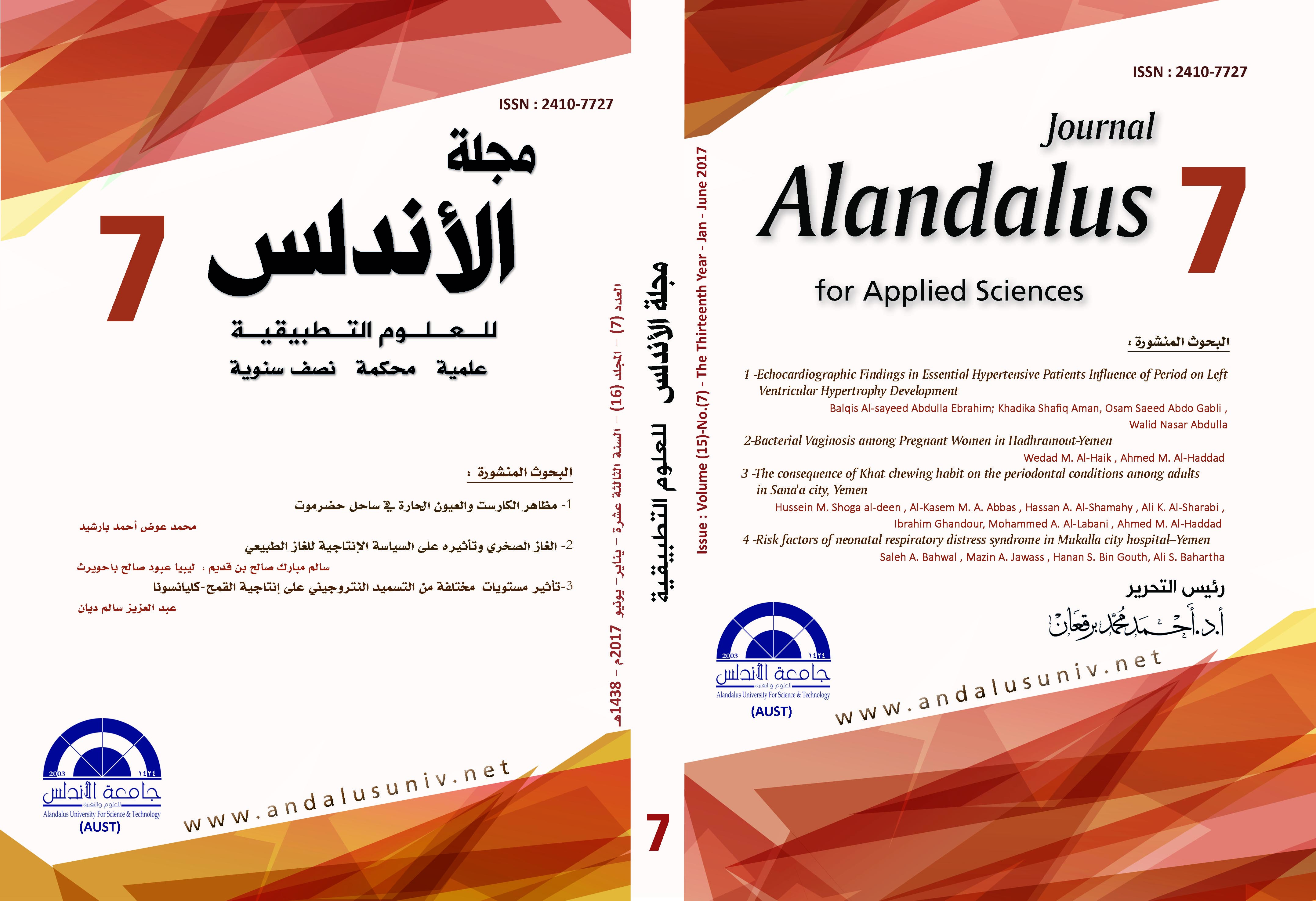نتيجة عادة مضغ القات على صحة و حالة اللثة و الأسنان للأصحاء البالغين في مدينة صنعاء, اليمن Abbas, al-Qasim M. A. al-Shamahi, Hasan Shauq al-Din, Husayn Muhammad Ghandur, Ibrahim al-Labbani, Muhammad A. al-Haddad, Ahmad M. al-Sharabi, Ali Kayid
محتوى المقالة الرئيسي
الملخص
Background and objectives: Khat chewing is popular among Yemenis.
This study was performed to investigate the effects of Khat chewing on periodontal tissue (gum), teeth status and other oral health status.
Methods: A total of 3000 adult subjects (2400 chewers and 600 non-chewers with a mean age of 29.5 ± 2.9 and 28.6 ± 1.7 years, respectively) were involved in this study in 2014.
The Basic Periodontal Examination (BPE) technique that recommended by the British Society of Periodontology was used as screening tool to obtain the picture of the periodontal condition.
The rate of the clinical conditions and associated OR were analysis, by comparing their occurrence between Khat chewers and non Khat chewers, then significance was tested by chi-squared test.
Results: The oral health status of non-chewers was significantly better than that of chewers.
The worst sextant score of chewers was a highly significant in which the rate and associated OR of type 4 and type 3 were 8.5% with RR= 18.5 times and 21.7% with 1.9 times respectively, while that of non-chewers were 0.5% and 12.7%, the difference being statistically significant (Pv<0.0001).
The incidence of tooth bad conditions as tooth loose, attrition, and staining were significantly higher in Khat-chewers.
About 11% of chewers complained of mouth pain, as compared with only about 2% of non-chewers.
Furthermore, on oral mucosa ulcer erosion, white patch, red patch, vesicles and creaked were present in 19.5%, 76.7%, 23%, 11% and 25.3% respectively of chewers, as com-pared to 0.3%, 2%, 8%, 0.16% and 1% of non-chewers.
Similarly, gingival wrinkled, whitening, redness and recession ulcers on the oral mucosa were present in 56.5%, 52%, 43.7%, and 96.7% respectively of chewers, as com-pared to 3%, 7%, 49%, and 53% of non-chewers.
Also significant OR was associated with bad oral mucosa status, bad gingival status, and bad teeth conditions in Khat-chewers.
Conclusion: There does appear to be a relationship between the terrible effect of chewing Khat on periodontal tissue and oral health status.
